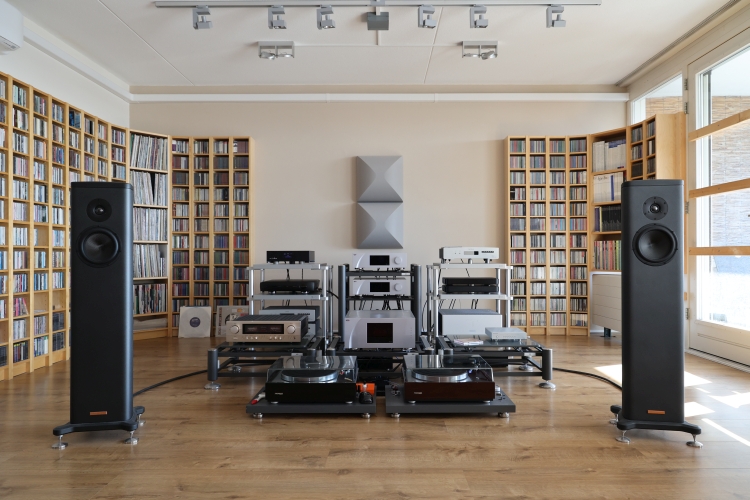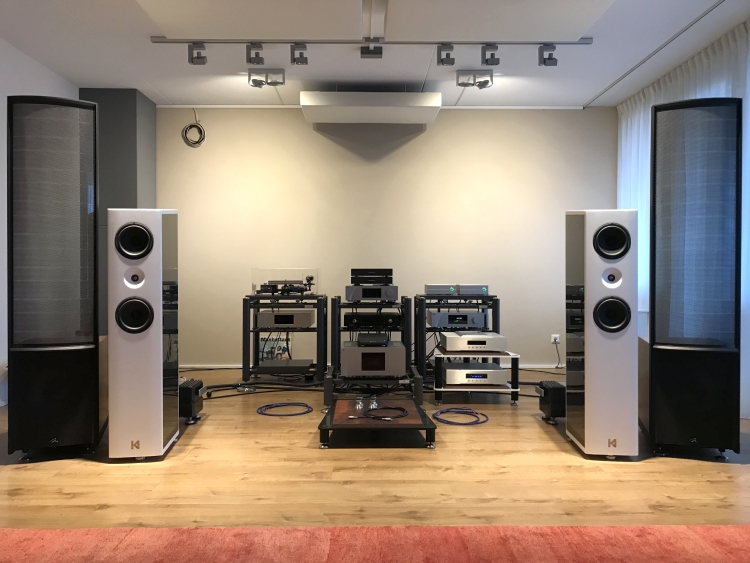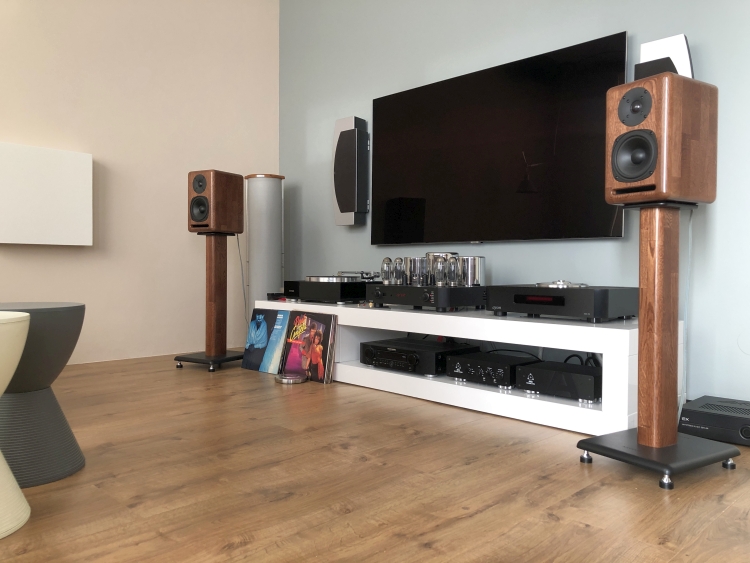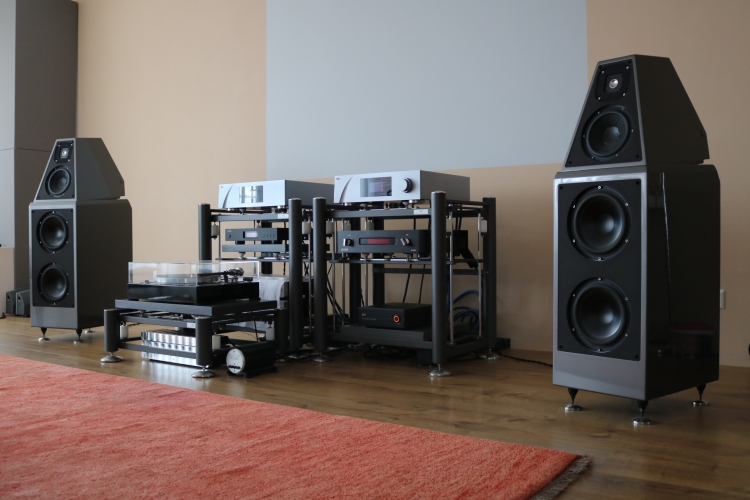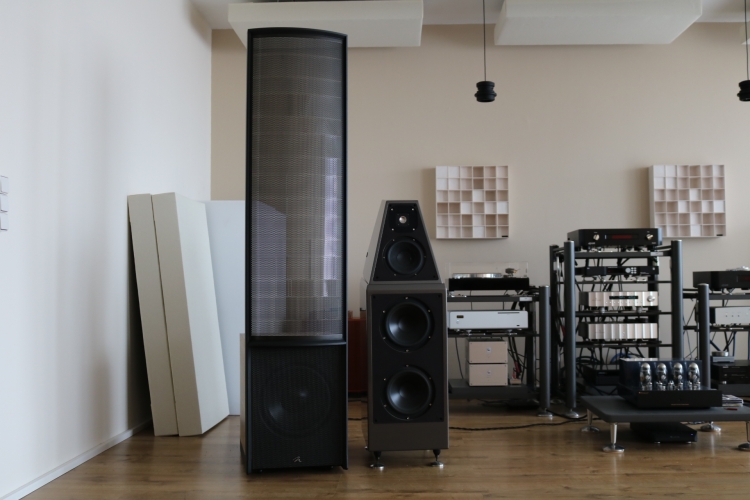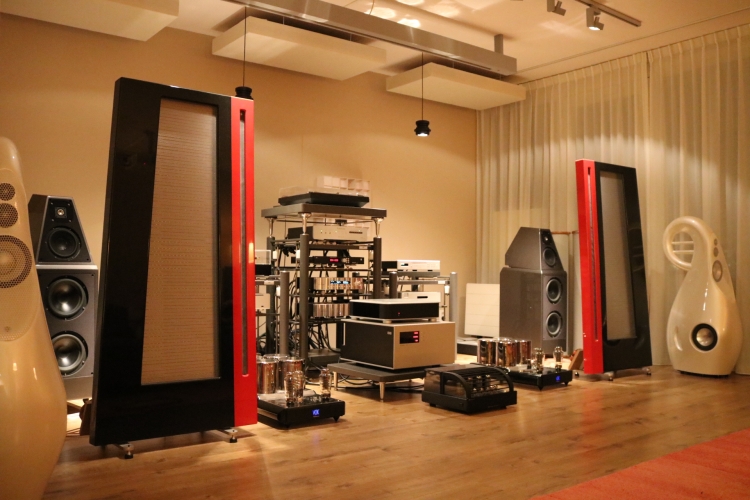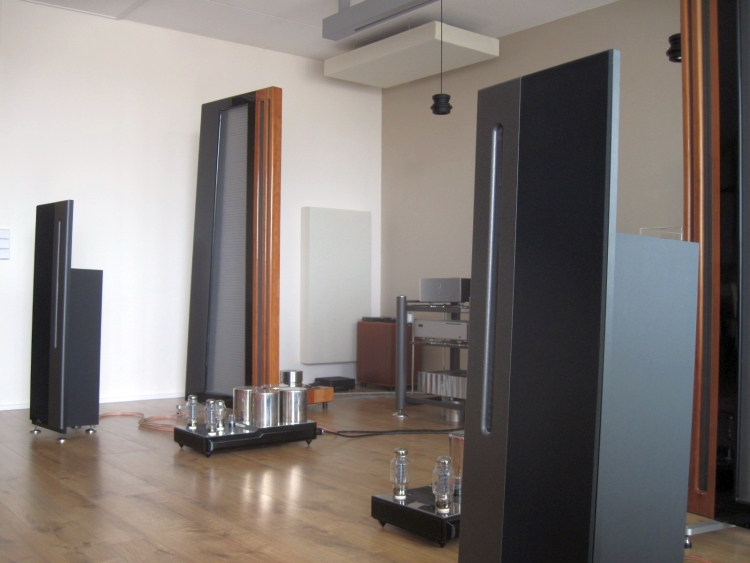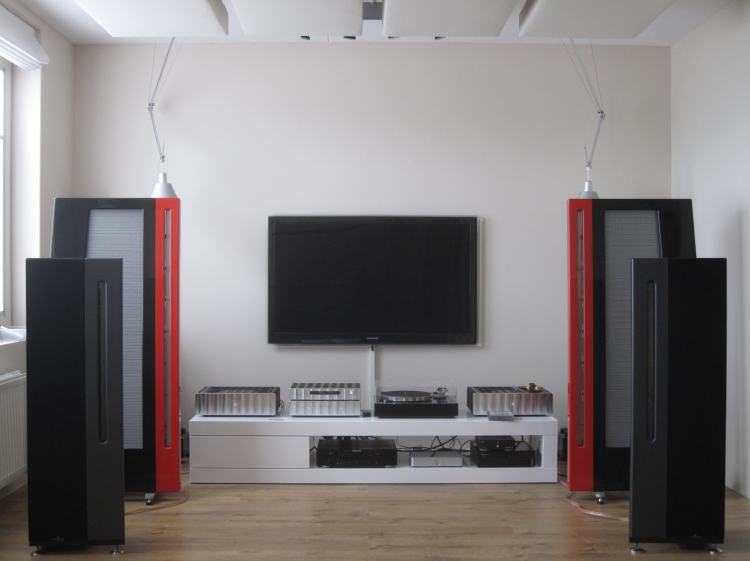HFA Audio Setup History 34 – Media Room v5 – May 2024
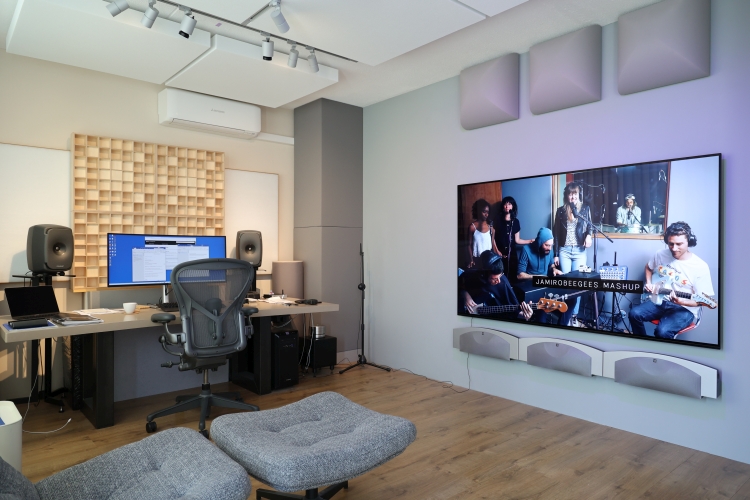
All this time, I had been consuming lots of information about acoustics when I stumbled on a video by Dennis Foley of Acoustic Fields. Contrary to many vendors, he stated that it is no use to address just the corners and that room issues are most effectively addressed by spreading the treatments across all surfaces. The comment section contained several heated responses from people stating that their corner treatments sure did work, and, of course, they do, but that is not the point. My takeaway from Dennis Foley’s key point is that the problems won’t ever be entirely fixed just by focusing on the prominent places, such as corners, even if they are indeed hot zones. When I thought about it, this tied in perfectly with Eelco Grimm’s earlier advice and I had to admit that the treatment in the hallway was unexpectedly hugely effective.
As it follows, it wasn’t until I added four more RTFS Ceiling Vanes that the last traces of acoustical issues vanished. To be fair, I had tried the Ceiling Vanes directly above the speakers in my main system a while ago but found they caused too much damping. I used them in the kitchen area instead, where they served beautifully, linearizing the Genelec setup and improving the overall ambiance.
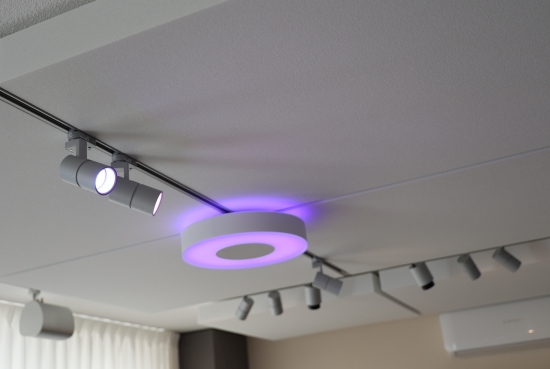
It will depend on the situation, but with all the empty walls and floor surfaces in the new cinema room, I was clearly asking for trouble, and the ceiling vanes were an absolute blessing.
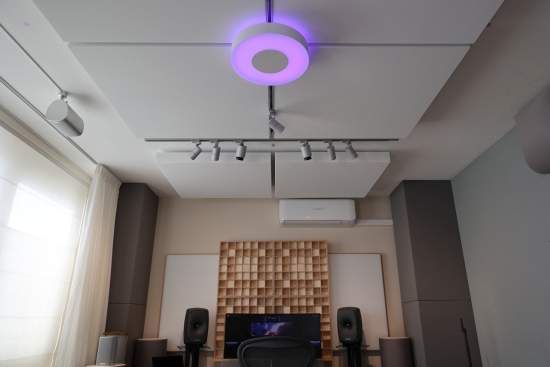
Because of my deep desire for symmetry, I planned the lighting elements and panel placement so the assembly would be perfectly centered for the Genelec and Cinema systems. I wanted the room’s two functions to be individually perfectly aligned while making the entire room look visually balanced.
It looks simple and intuitive now, but trust me when I say it took me quite some time to devise this solution. The breakthrough came when I decided to modify the round Philips Hue Infuse lighting element with a special bracket to fit a 3-phase rail that was neatly tucked between the panels.
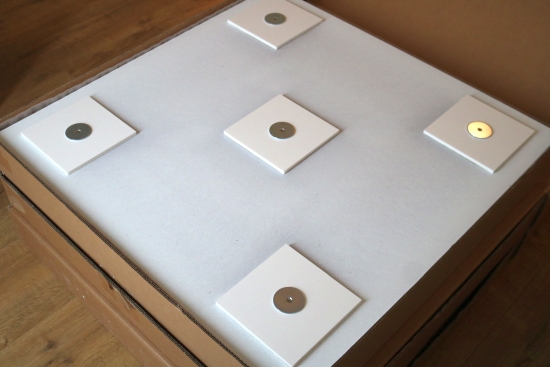
The Ceiling Vanes are conveniently and very securely affixed using five metal sections that grip onto five magnets screwed into the ceiling.
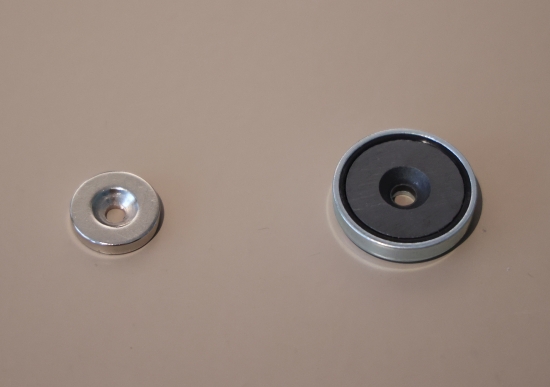
Above, on the left, is an early neodymium version magnet that came with my first panels, and on the right, the current version, which uses a larger normal magnet. The strength is about the same, and the panels remain in position very securely. In fact, the magnetic grip is so firm that one has to slide the panels to the side in order to remove them.
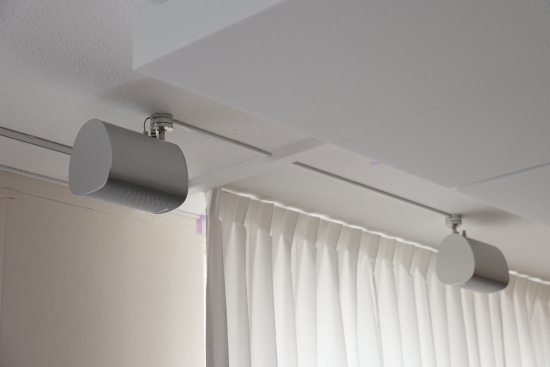
These are Piega ACE 30 speakers used for the height/Atmos channels. I selected them because I like their industrial look and because they have AMT tweeters, which should be a good match for the Martin Logan Fresco’s planar ribbon drivers. When I first connected them, I was amazed at how deep the bass reached. The specs state 50Hz, but I did not believe it until I heard them. Would you believe they actually go deeper than the much larger Frescos? Also, the Pieagas sound engagingly dynamic, robust, and impactful, and go plenty loud for my purposes. However, these are not the most linear speakers at their price point. But that’s nothing Odyssey can’t fix. Two more ACE 30 speakers for the left and right surround channels are positioned to the sides at ear height.
With the main system and Genelec system now sounding mighty fine, all that remained were some flutter echo and a slightly messy bass response in the cinema system.
No wonder, with an empty wall and large empty spaces on the adjacent floor and ceiling. I wanted to maintain a clean look as much as possible and did not want to use carpet or rugs. So, I figured my only option was to use panels on the ceiling. My first instinct was to use RTFS Carreau since they are the same color and thickness as the Ceiling Vanes. However, after trying this, I felt it disrupted the beautiful symmetry I had worked so hard to achieve.
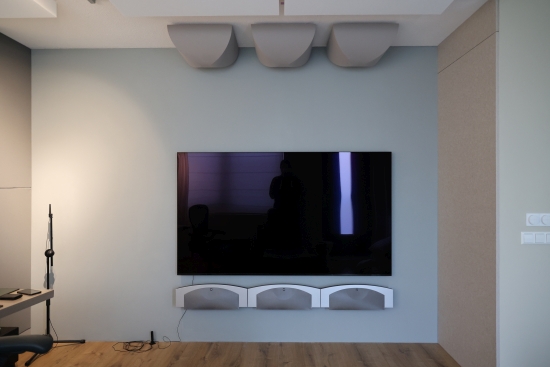
Next, I tried RTFS SiRRAHs, which are probably overkill in these positions but are aesthetically pleasing and provide a different pattern that does not interfere with the symmetry as much. I thought it looked pretty nice in daylight, but as soon as night came and the spots were turned on, the panels’ shapes projected messy and uneven shadow patterns on the wall. Truly, it can be a burden being so hung up on aesthetics… Fortunately, the solution was simple. Instead, I mounted them on the wall, where they proved to be just as effective.
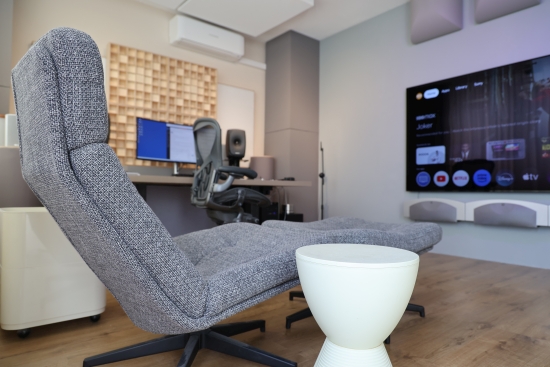
The SiRRAHs don’t look like they could have much effect, but their efficiency cannot be overstated. These three panels massively improved the sound of the cinema system by removing the flutter echo and cleaning up the bass response.
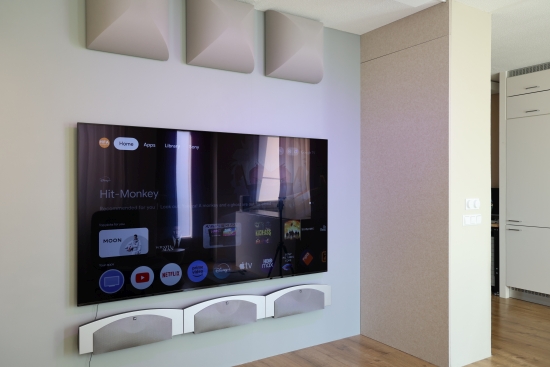
You’d almost forget it was ever there, but the right half of the screen is where the hallway used to be. With no other familiar elements on the wall, the TV looks average-sized when casually looking at it, but when watching content, the TV’s 83 inches sure are very nice! Of course, one gets used to this again in a few days, after which 65-inch TVs in other places appear relatively small. Such is life… The space actually allowed an even larger screen, which I did consider, but the next size up (~100 inches) was double the price for the same quality OLED, and the only alternative was to opt for a regular LED version, which proved to be too much of a compromise in terms of contrast and sharpness.
That’s all for now. I usually end these chapters with something like “until the next iteration”, but I strongly feel this setup will last a while. (Famous last words…)
Main Active Monitor Loudspeakers
Genelec 8341A
Digital Cables
LRC Cinema Loudspeakers
Martin Logan Fresco
Rear/Top Dolby Atmos Cinema Loudspeakers
Piega ACE30
Cinema Amplifier
Denon AVC X3800H
Cinema Sub
Room Treatment
R.T.F.S. Stripe
R.T.F.S. SiRRAH
R.T.F.S. Big Block
R.T.F.S. Ceiling Vane
Acustica Applicata DaaD 2
Acoustic Module Tube Basstrap Premium
T.Akustik Spektrum D20 Diffusor
See Also
All HFA Reference equipment and accessories frequently used for reviews: Associated Equipment
Overview of all Setup Snapshots
In-depth overview of how the HFA systems developed over the years: HFA Audio Setup History
Ranking Order of reviewed components with appointed Awards: HFA Awards page
